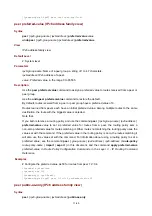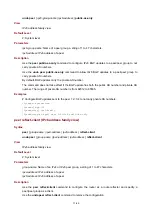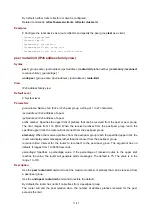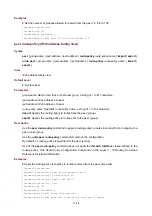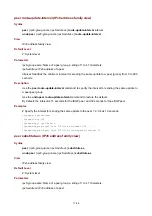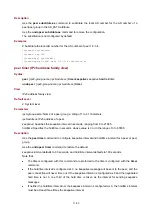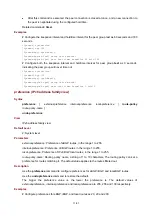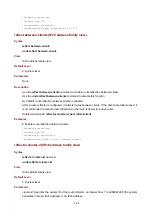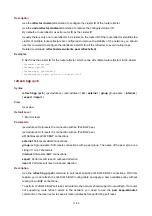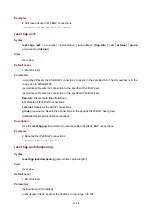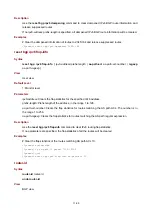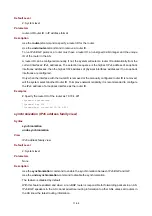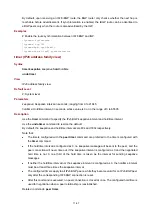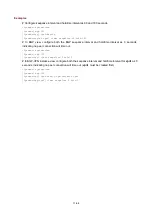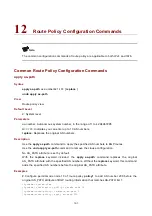
11-44
Default Level
2: System level
Parameters
ipv6-group-name
: Name of a peer group, a string of 1 to 47 characters.
ipv6-address
: IPv6 address of a peer.
Description
Use the
peer log-change
command to enable the logging of session state and event information of a
specified peer or peer group.
Use the
undo peer log-change
command to remove the configuration.
The logging function is enabled by default.
Examples
# Enable the logging of session state and event information of peer 1:2::3:4.
<Sysname> system-view
[Sysname] bgp 100
[Sysname-bgp] ipv6-family
[Sysname-bgp-af-ipv6] peer 1:2::3:4 log-change
peer next-hop-local (IPv6 address family view)
Syntax
peer
{
ipv6-group-name | ipv6-address
}
next-hop-local
undo peer
{
ipv6-group-name | ipv6-address
}
next-hop-local
View
IPv6 address family view
Default Level
2: System level
Parameters
ipv6-group-name
: Name of a peer group, a string of 1 to 47 characters.
ipv6-address
: IPv6 address of a peer.
Description
Use the
peer next-hop-local
command to configure the next hop of routes advertised to a peer/peer
group as the local router.
Use the
undo peer next-hop-local
command to restore the default.
By default, the system sets the next hop of routes advertised to an eBGP peer/peer group to the local
router, but does not set for routes outgoing to an iBGP peer/peer group.
Examples
# Set the next hop of routes advertised to eBGP peer group
test
to the local router.
<Sysname> system-view
[Sysname] bgp 100
[Sysname-bgp] ipv6-family
[Sysname-bgp-af-ipv6] group test internal
















